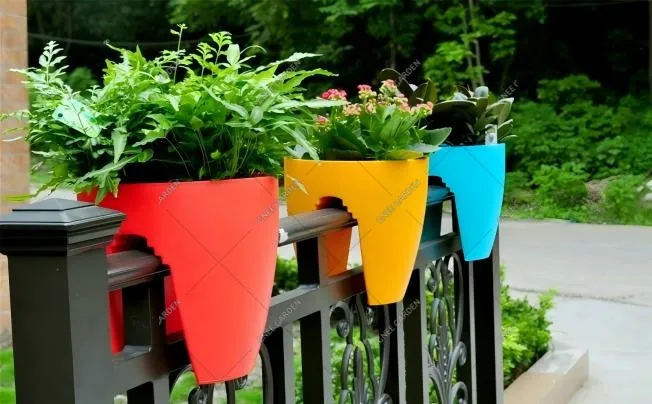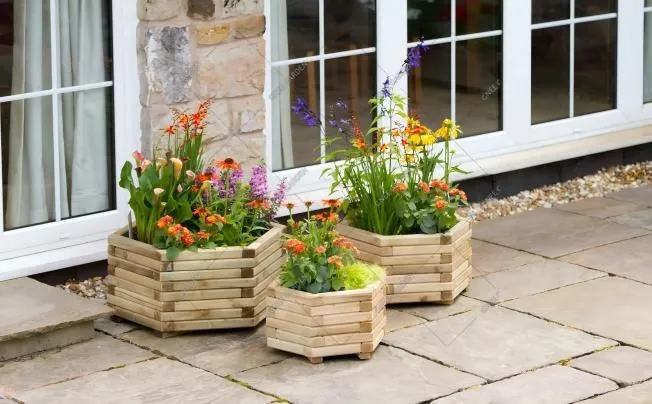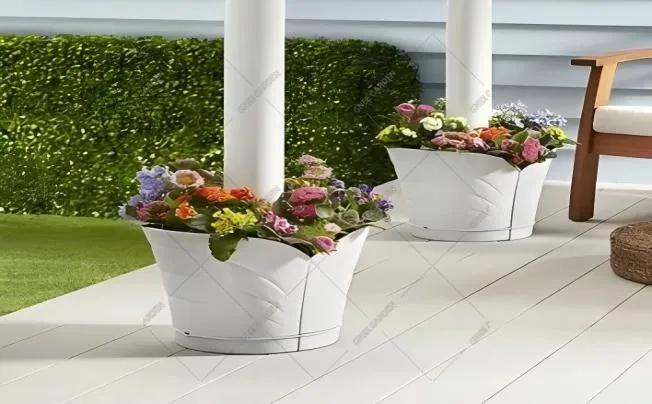What Is The Best Flower Pot For Outdoor Plants?
Flower pots are more than simply basic soil-holding and plant-fixing receptacles. In reality, they serve as both the last touch to the aesthetics of an outdoor environment and the basis for plant growth.
Choosing flower pots to suit different climates
Sunny regions
Flower pots must withstand extreme heat in regions with intense sunlight and continuous direct sunlight. Under the blazing sun, ordinary flower pots absorb and retain a lot of heat, which causes the soil temperature to rise significantly and leaves the plant roots in a hot, stuffy atmosphere for an extended period of time. High temperatures can burn the roots, making it impossible for them to absorb water and nutrients normally. As a result, the plants' leaves will turn yellow and wither, their blossoms will wither, and eventually the entire plant will dry out and die.
Cement and ceramic flower pots are the best options for areas with high temperatures and intense light. Because of their thick composition and special firing method, ceramic flower pots have exceptional resilience to high temperatures. For the soil and plant roots in the pot, they can effectively produce a reasonably cold "microclimate" by blocking the intrusion of high temperatures from the outside. In addition to having a solid texture, cement flower pots take heat slowly. They are better able to control their own temperature stability and prevent an abrupt increase in soil temperature, even under the blazing heat.
Sun protection techniques are still essential, though, even if flower pots that can withstand high temperatures are employed. Sunshade nets and shade cloths are useful tools for creating a cool "green shade" for plants and flower pots during the hot summer months. They can also be used to block some strong sunlight and lessen heat transfer and light intensity. At the same time, move the flower pots to a semi-shaded, well-ventilated area, like beneath a building or next to a large tree, so that the plants can benefit from the sun's nutrients without being overheated. This will ensure that the plants grow healthily and produce lovely flowers.

humid and rainy regions
The ability of flower pots to drain becomes crucial in humid, rainy regions with high air humidity and frequent rainfall. Too much rain may soon collect in the flower pots if they are not properly drained, which will cause a significant amount of the soil's oxygen to be squeezed out. Lack of oxygen will prevent the root system from breathing, disrupting normal physiological function and making root rot more likely. Damaged roots make it difficult for the plants to absorb nutrients and water, which will hinder their growth.
In these kinds of settings, plastic flower containers are advantageous. Water may swiftly glide down the smooth surface of plastic material, making it difficult for water to build up. Furthermore, the majority of plastic flower pots are made with several drainage holes at the bottom to make sure that extra water is quickly released from the pot and to preserve the soil's air permeability. Furthermore, flower pots made of plastic weigh comparatively less. The flower pots are reasonably easy to move, even if the soil moisture content rises after rain. This allows for quick placement position adjustments to prevent the hidden risk of water collection.
It is possible to use some ingenious stabilisation techniques to further improve the flower pots' stability and keep them from toppling over in wind and rain. It is possible to create a sturdy "flower pot array" by arranging the flower pots in groups, leaning on one another for support, or by placing larger stones, trays, or anti-skid mats at the bottom of the pots to improve friction with the ground. Plants can be protected from wind and rain by selecting a shorter flower pot with a lower centre of gravity, which also lessens the chance of the pot toppling over.

Cold climates
If the flower pot's material is not cold-resistant, the low temperatures will alter its interior structure and cause it to become brittle and weak in regions where winter temperatures frequently fall below freezing. The soil will disperse once the flower pot breaks, leaving the plant roots vulnerable to low temperatures and frost damage. This will have a significant impact on the plants' chances of surviving.
Cold climates are best suited for flower pots made of stone or sturdy plastic. Because stone flower pots are naturally cold-resistant, they can withstand the challenge of extreme cold with composure. Thick plastic flower pots give plants a reasonably warm "shelter" because of their high thermal insulation performance and degree of flexibility, which make them difficult to shatter at low temperatures.
Even with cold-resistant flower containers, further winter protection is important. As a kind of "warm coat" for the flower pot, you can apply a thick layer of insulating material, such as blankets, hay, foam boards, etc., to the outside of the pot before the temperature drops significantly. This will keep the roots warm and minimise soil heat loss. In order to ensure that some more sensitive plants overwinter securely, you may also construct a basic greenhouse or relocate them indoors to a bright spot for upkeep. Next spring, they will be rejuvenated and bloom once more.

Selected Blogs
-
What customization services are available for metalworking customization?
2024-12-12
-
What Is The Difference Between A Plant Container And A Raised Bed?
2024-04-23
-
Garden Screening & Fence Panels
2024-04-23
-
Gardening pot selection tips
2024-04-17
-
The function and collocation of horticultural fire pot
2024-04-17


